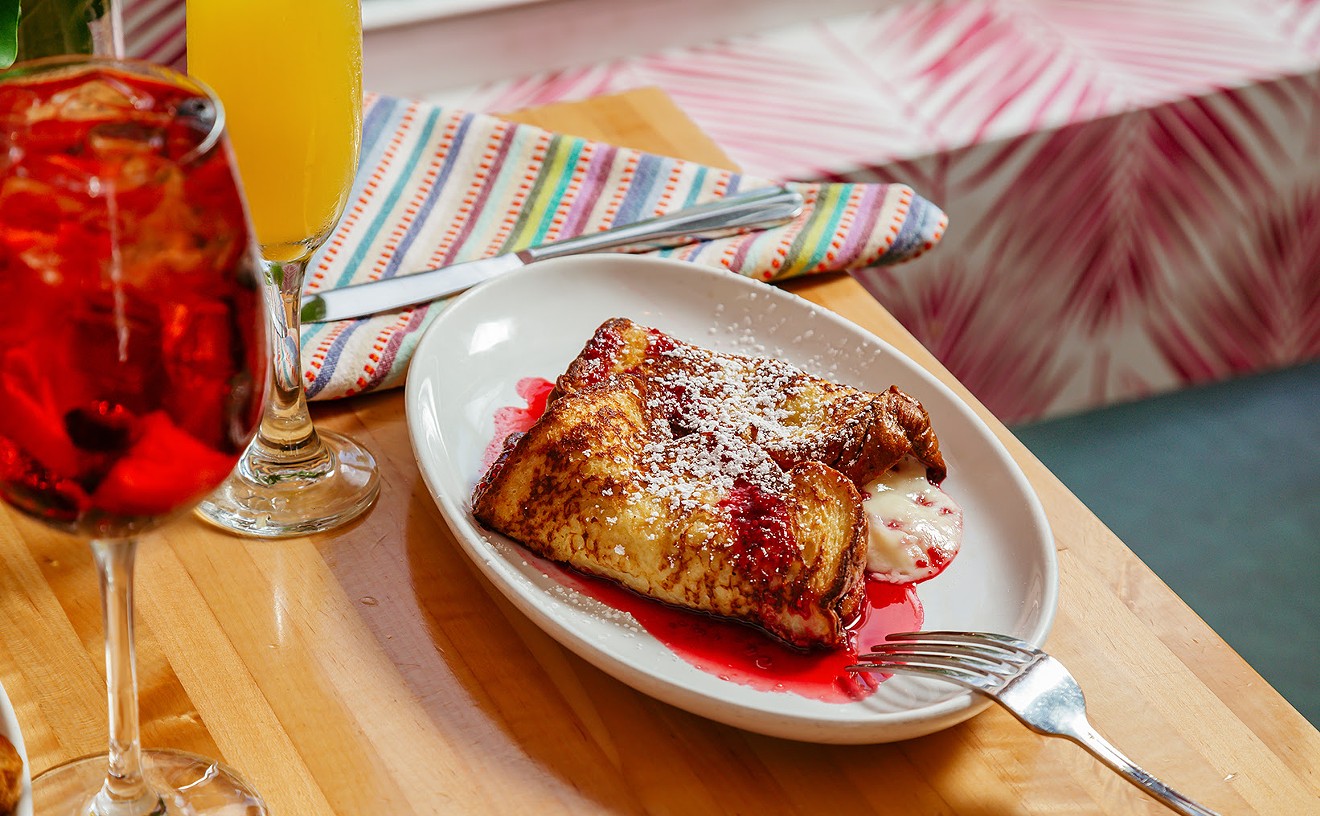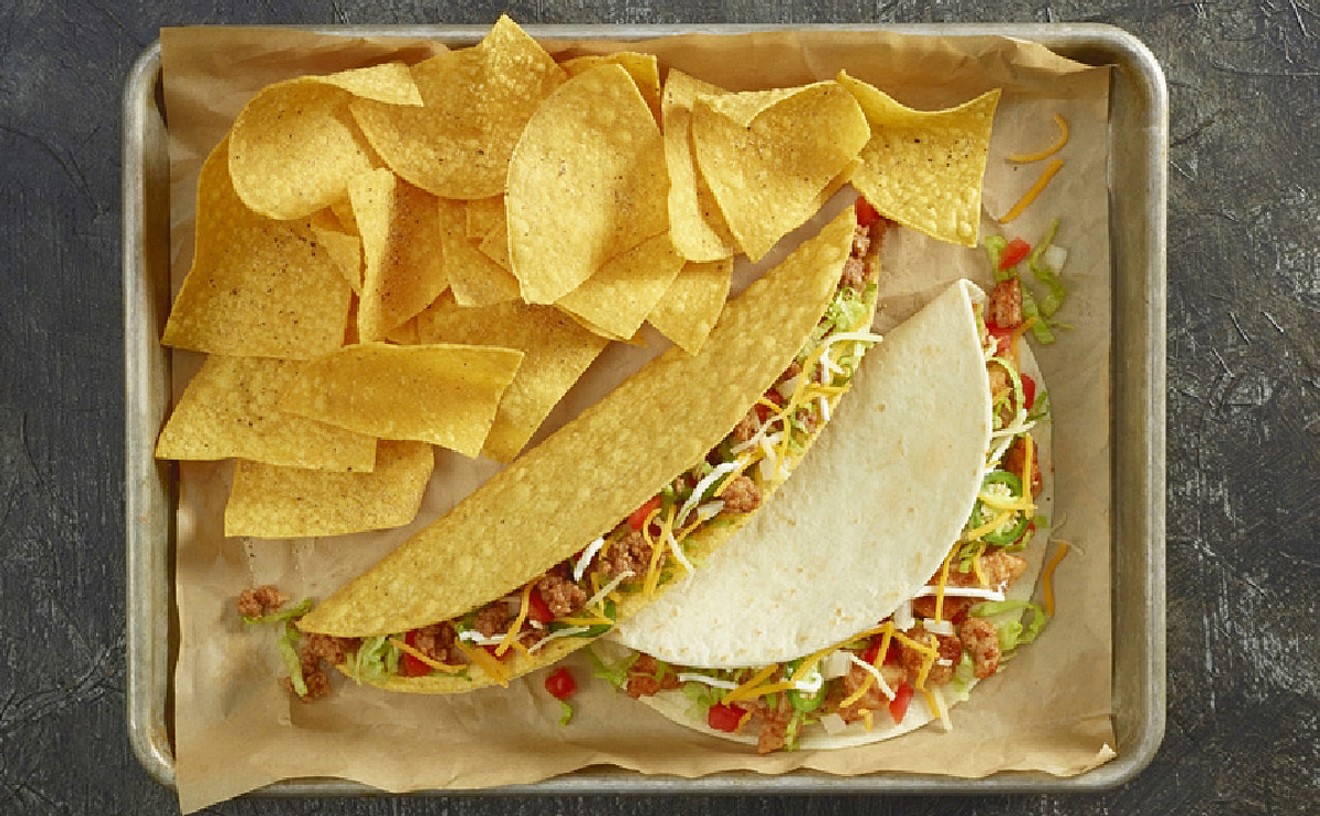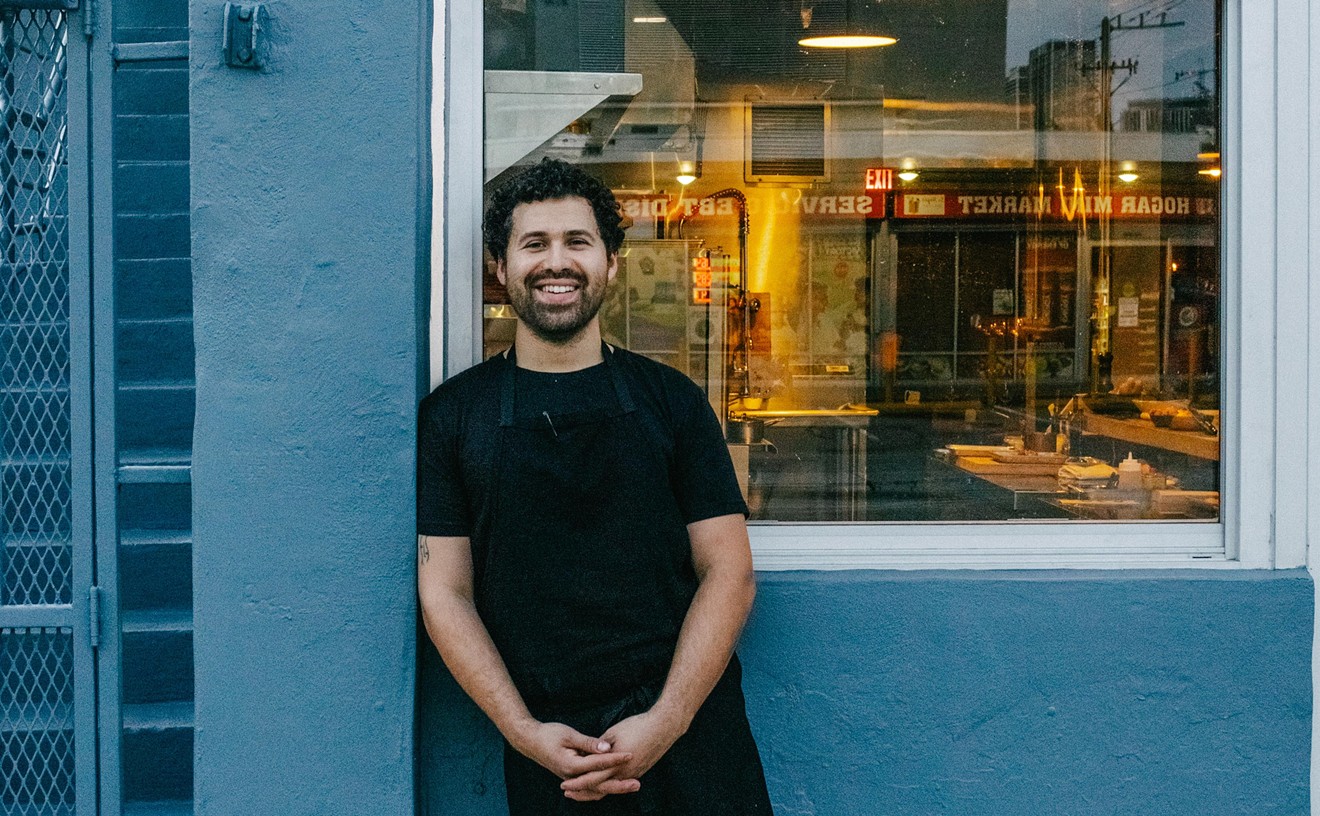The restaurant is handsome, though not charming. They can call it a "house," but it doesn't feel like home. The minimally adorned walls are black, with wood wainscoting and gold trim. If the smoothly laminated redwood tabletops were topped by linen, the space would look pretty much like a midrange hotel dining room (Tara is located on the ground floor of the Sonesta Hotel & Suites, but operates independently).
Live music emanates from an elevated stage toward the front end of the space; on our visits the performer was pleasantly low-key, far superior to the Gypsy Kings tunes being piped in earlier. (If there were such a thing as an oldies radio station for restaurant music, this group would rule the playlist.)
In my aforementioned formula for steak-house success, I forgot to mention the importance of the obligatory predinner bread, often an impressive variety of rolls or a warm boule served on a wooden board with serrated knife. Apparently Tara also forgot about the importance of bread, their basket booty boasting only onion-poppy-seed rolls that were neither warm nor exceedingly fresh. Butter was served alongside the basket, as was "shabang" sauce, which our waiter suggested would "go well with both the bread and the steaks"; another time a different waiter told us it "goes well with just about anything." Shabang is actually cocktail sauce with an infusion of vinegar and honey, and beyond the verbal recommendations, it is used here to dress a tomato-onion salad as well as pork chops. It doesn't "go well" with any of the above but is ideal as a dip for shrimp cocktail. Strangely, though, the shrimp come with a redundant dish of regular cocktail sauce.
Shrimp cocktail is one of just three appetizers, the others being crabcakes and, when in season, stone crabs. A special starter one evening was a combo plate with the shrimp, crabcakes, and the tomato-onion salad. A pair of shrimp were translucently pale, appearing to be practically raw. They were cooked through but possessed absolutely no taste -- like eating soft, crustacean-shaped ice cubes. The quartet of mini crabcakes was better, crisply crusted, fully flavored, served with a traditional cold mustard sauce. Unripe, undressed tomatoes (waiting, I suppose, for a splash of shabang) and overly thick slices of onion comprised the third combo component. A wedge of iceberg with bacon-blue cheese dressing, and a house mix of mesclun, are the remaining salads. There are no soups.
The steak menu is pared down, too. A porterhouse is available only in servings for two or three people, the T-bone for four. This means that an individual has a choice of but two cuts: an eight-ounce filet mignon and a New York strip. All meats are removed from the bone and presented sliced, on a sizzling platter angled on the table so juices can roll toward the front of the plate -- if there are any juices, that is. Our strip steak had none, which is what happens when the meat is cut on a kitchen board rather than by the diner. What did purposefully puddle at plate's end was a pool of drawn butter, into which the waiter, using tongs, individually dipped the first few slices of meat, before dragging them across the rim of the searing white plate, leaving inelegant brown skid marks. The meat was full-flavored enough without the butter, ultrarich with it, and tenderly retained the appropriately meaty bite of a New York steak -- better than the wet-aged strips of a regular neighborhood eatery but not nearly as distinguished as those found in renowned steak houses.
Char-grilled chops of veal, pork, and lamb complete the meat portion of the program, the last plated as two thick loin steaks seared to an almost blackened degree, dipped into butter, and served with bright, artificially green mint jelly.
This restaurant's slogan reads, "When the subject is great steaks, you'll keep hearing about Tara." They don't say anything about the lobster, probably because there isn't much to say. It's fresh (plucked from a tank in the dining room); comes in two- or four-pound sizes (also a ten- or fifteen-pounder that has to be ordered two days in advance); is boiled to a sweet, delectable state; and served with clarified butter.
Of the two alternative seafood selections, one was a larger version of the crabcakes with mustard sauce -- salmon with mustard sauce. The other was a tall square of Chilean sea bass with bread-crumb topping and a tarragon-shallot white wine sauce.
That noncredible creamed spinach was made from frozen greens and was in need of garlic, nutmeg, or some flavoring other than salt, but it was mainly flawed owing to a thorough lack of cream. On my return trip the menu wording had been changed so the creamed spinach became "damned good spinach." Wrong again.
Sautéed mushrooms, steamed asparagus, and shoestring onion rings constitute the rest of the vegetables, while spuds come four ways: baked, mashed, French fried, and a "steakhouse potato platter," which I thought might be a sampler plate but is just another name for bastardized lyonnaise potatoes -- in this case French fries baked on a sizzle plate with onions, paprika, and spices. Tasty, though $9 is a lot for fries, even a platter for two.
The décor and menu don't justify Tara's lofty price structure. Service doesn't quite reach that level either, but the staff is nonetheless focused and well trained. They're a little shaky on wine service, but the wine list itself is solid and user-friendly.
"Carnegie Deli" cheesecake, imported from the New York landmark, is a skyscraping slab of extremely creamy, vaguely vanilla cream cheese atop a wisp of buttery crust, with freshly whipped cream on the side. It's a good version, and hefty enough for two to share, which might explain the $10 charge, except most diners don't know the cost until they receive the check because desserts are visually presented on a tray instead of being listed on a menu with prices. Dessert trays serve as a more easily maneuverable pastry cart (a laptop Viennese table, so to speak), the purpose of this ploy being to get the eyes to persuade the brain to overrule the stomach's wimpy objections and order more food. It's a sure-fire means of increasing sales and maximizing profits, especially at that price. For a chain wannabe like Tara Steak & Lobster House, unfortunately, the bottom line becomes, literally, the bottom line.











